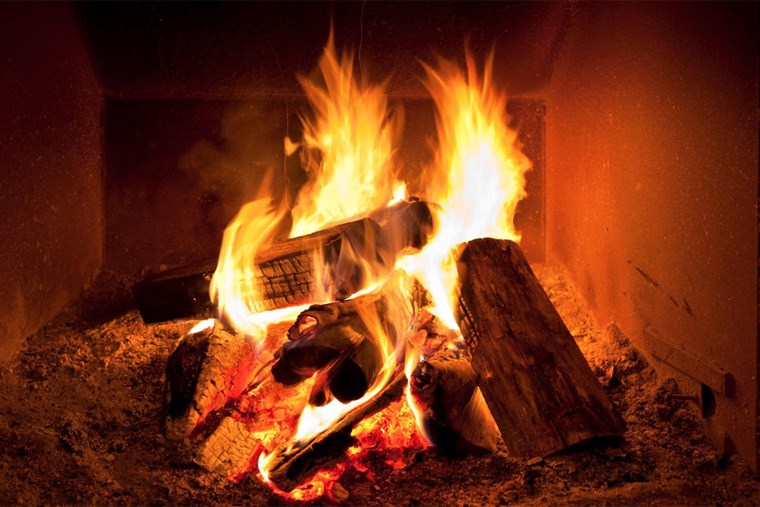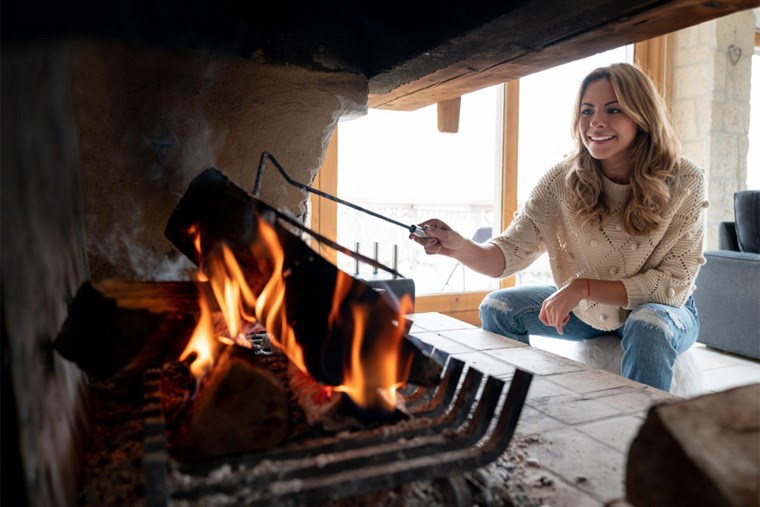One of the simple pleasures on a cold winter’s night is sitting in front of a roaring fire with a good book or good company. Taking the time to clean and maintain your fireplace will make those cold nights a little cozier.
Annual Inspection
Canadian Chimney recommends a WETT level 1 professional chimney inspection for most people but also offer WETT level 2 and WETT level 3 to check all the high and challenging places you won’t be able to get to or see yourself.
Clean the Inside
Clean out the inside of the fireplace. Another use for your COVID mask? They make great fireplace cleaning face ware. When the fireplace is cool, remove the ash from the bottom with a heavy hand broom. Using a chimney brush, scrub the build-up of soot and creosote from the sides of the fireplace and interior of the chimney. Creosote is a brown or black residue that can build up over time. If you don’t remove it, it can cause chimney blockage and lead to a fire. While softer and easier to clean up than creosote, soot does cover more area and can be just as detrimental to your fireplace’s condition.
The longer you wait between cleanings, the more difficult the job will be, so don’t put it off too long. Again, experts recommend that you get your chimney professionally serviced once a year, but keeping clean in between will lessen fire risk.
Inside Visual Inspection
While you are cleaning, check for cracks. Any cracks you find in the mortar, bricks, or other masonry in the fireplace need to be addressed. Use high heat mortar and a caulk gun to fix any minor cracks you may find. Here is a guide to this process.
Outside Visual Inspection
Visually inspect the chimney and its cap. Go outside and take a good look at the chimney and the metal or stone cap on top. You should look for cracks in a masonry chimney and dents or rust in a metal one. The cap should be properly in place to prevent tree debris or animals from getting in from the top. If anything looks like it needs attention and getting on the roof is not your cup of tea, call the professionals.

Test Before Lighting the First Fire of the Season
Run a little test before going big. Light a few small pieces of wood first and check to make sure the smoke flows up through the chimney. If it comes into the room, there are a few possible issues. Make sure there is not an obstruction in the chimney duct, excessive creosote, or soot buildup. Also, your wood may be too wet. Another common mistake: Did you remember to open the damper?
Carbon Monoxide Detector
Add a carbon monoxide detector to your home if you haven’t already. Carbon monoxide is odourless, hard to detect, and can build up in a home if a chimney is clogged. While many homes have smoke detectors installed, carbon monoxide detectors are not as expected.
Choose Woods Wisely
Now that you are ready to build your fire, stick to the hard stuff. Hardwoods such as birch, maple, and oak are better for burning than softwoods like pine and cedar. Before burning, wood should be dried or “seasoned” for at least six months. This process removes much of the moisture in the wood, which will result in cleaner-burning fires and less clean-up.
Remember that regular maintenance and checks provide a safer home fire experience. You may be able to take on repairs to minor damage, however, major damage and annual inspections should be left to the pros.
 This story was made possible by our Community Partners Program. Thank you Riverbend Interiors Floors & Décor for helping to expand local news coverage in Alberta. Learn more.
This story was made possible by our Community Partners Program. Thank you Riverbend Interiors Floors & Décor for helping to expand local news coverage in Alberta. Learn more.



